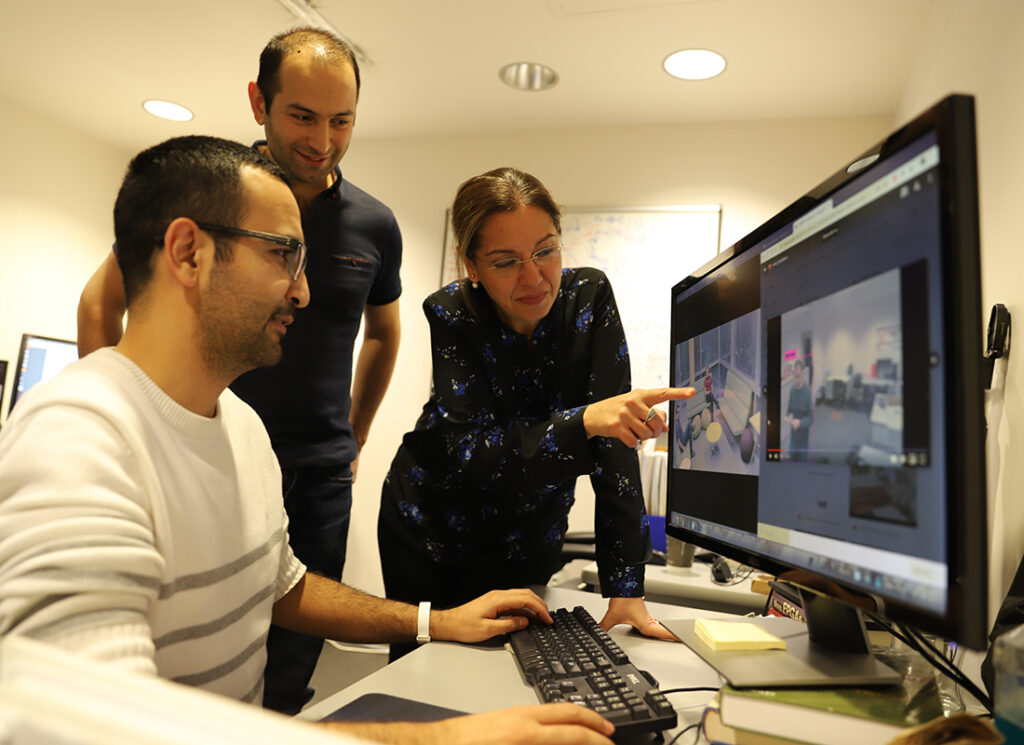
Remembering to turn the lights off when leaving a room is easy, but letting the furnace that you’re headed out isn’t as simple. About 37% of all energy used by commercial buildings and 40% of energy used in residences go toward heating, ventilation, and air conditioning (HVAC). The costs related to heating and cooling unoccupied spaces in homes and office buildings have been a challenge for decades.
Current occupancy sensors only detect movement, so they can’t tell if someone is stationary. They also have trouble distinguishing between people and large pets, and often require an external power source and data processing. When a room is occupied, not being able to detect occupancy can cause user discomfort. On the other hand, not reliably knowing when a room is empty adds up to massive amounts of unnecessary heating and cooling costs for spaces without any people in them.
A collaboration between Electrical Engineering and Computer Science Professors Senem Velipasalar and Pramod Varshney, Mechanical and Aerospace Engineering Professor Ed Bogucz, Professor Tarek Rakha from Georgia Tech and SRI International, a nonprofit research institute, has developed a new sensor platform, MicroCam, which addresses many of the limitations that current systems face. Their project received funding from the U.S. Department of Energy’s Advanced Research Projects Agency – Energy (ARPA-E) and had to meet certain requirements. The platform had to be highly accurate, low-maintenance, affordable and easily self-commissioned for consumers while still providing more than 30% energy savings.
“It was important to us and ARPA-E that this platform be highly reliable, practical and inexpensive,” says Velipasalar. “This needed to be useful in real-world spaces, and it was designed to be battery-powered.”
The MicroCam is equipped with multi-modal sensors that can process motion, audio and video data. The camera can operate under daylight, low light or even no light conditions and it can be powered for more than a year on just three AA batteries – all the sensor processing is done inside one small unit.
“We do not use cloud computing, everything is captured and processed on this platform,” says Velipasalar. “You are not transferring or saving data, so it alleviates privacy concerns.”
While the MicroCam can detect occupancy, it does not share potentially private information.
“It senses your presence but only sends a 0 or 1 signal to the HVAC system,” says Velipasalar. “That binary occupancy result is the only data shared with the lead platform.”
Industrial and Interactive Design Professor Don Carr and his students worked with Velipasalar and Bogucz to design a prototype case for the MicroCam.
“Eventually we want a peel and stick and ideally you want to install one per room,” says Velipasalar. “If you have one of these in each room, you could monitor the entire space.”
Velipasalar was granted a patent in March 2023 titled “Low Power and Privacy Preserving Sensor Platform for Occupancy Detection.” It is the sixth patent she has been awarded over her career.
“This was a challenging project. We had to meet low cost and high accuracy requirements but it has incredible potential,” says Velipasalar.
The platform may have additional uses in the future including smart home integration and security monitoring. Velipasalar also sees possibilities for the MicroCam to provide activity monitoring and fall detection for families and nursing homes.
